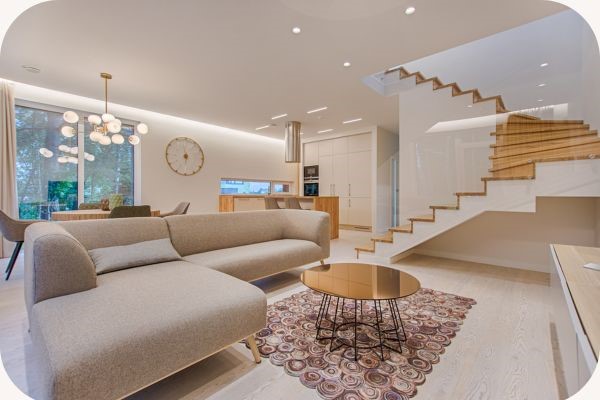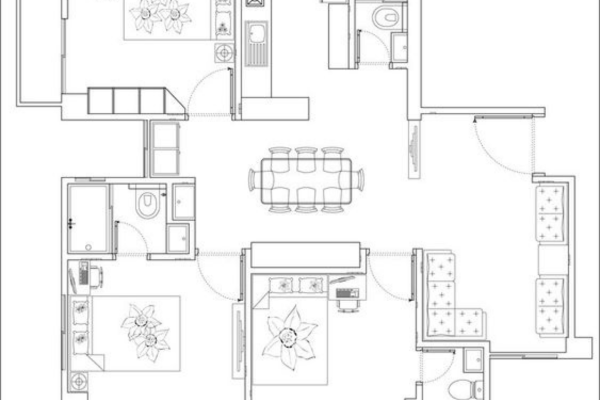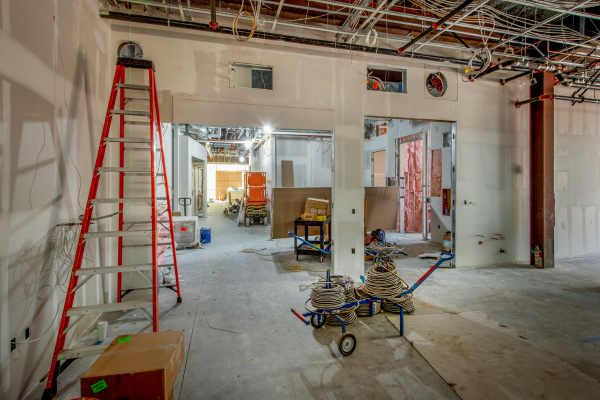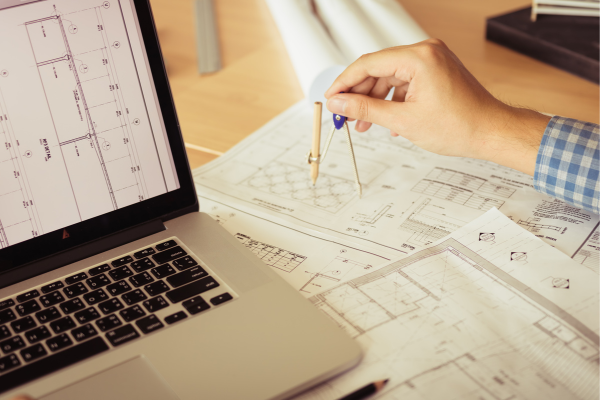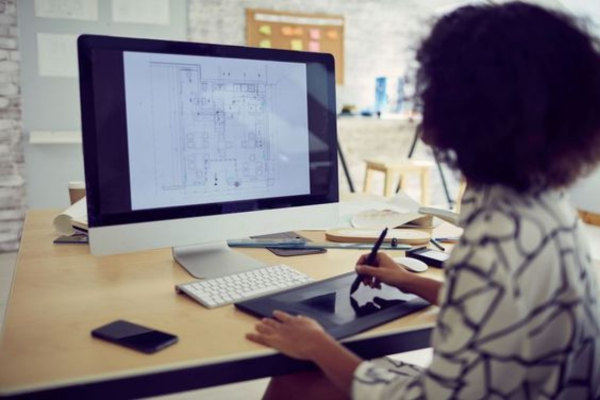“Design is a plan for arranging elements in such a way as best to accomplish a particular purpose.”
– Charles Eames
Interior design is more than just arranging furniture and selecting colour palettes; it’s about creating an atmosphere, a feeling, and a sense of comfort within a space. Successful London interior designers possess a unique set of skills that go beyond mere aesthetics. While talent, creativity, and an eye for design are essential, there’s a secret to their success that often goes unnoticed.
In this article, we will uncover the hidden truths about what makes an interior designer truly successful.
- Understanding the Client’s Vision
- Versatility & Adaptability
- Attention to Detail
- Time Management & Project Coordination
- Embracing Technology
- Constant Learning & Innovation
- Budget Management
- Environmental Consciousness
- Persistence & Resilience
1. Understanding the Client’s Vision
The capacity to understand and wholeheartedly embrace a client’s vision is one of the key requirements for successful Interior Design. The most experienced designers acknowledge that their primary task is not to create designs which suit a user’s tastes, but rather the creation of environments reflecting his or her individualities, likes and ways of life. They are actively listening to their clients and communicating openly, in order to ensure that any decision they make is compatible with the client’s wishes.
In order to understand the vision of your client, here are some guidelines:
- Ask open-ended questions: Give your clients the opportunity to share with you their dream environment, lifestyles and aesthetic preferences. The more you’re familiar with your client, the easier it is for you to create something that they love.
- Listen carefully: Listen to what your client says and what he doesn’t say. Valuable clues on their preferences may also be provided by the way in which they speak and look.
- Be empathetic: Try to look at things from your client’s point of view. What’s the meaning of their priorities? What’s their concern about? You will be better able to address their needs and provide a place that they are comfortable and happy in, because you understand the client’s point of view.
2. Versatility and Adaptability
Interior designers often encounter a wide range of projects, from cosy apartments to spacious commercial spaces. The secret to their success lies in their versatility and adaptability. They are capable of seamlessly transitioning between different design styles and scales. This adaptability allows them to take on a variety of projects and cater to diverse clientele.
To be flexible and adaptable as an interior designer, here are a few tips:
- Have a great deal of experience in the design style: The more design styles that you know, the smarter equipped you’ll be when it comes to catering to a wide range of clients.
- You’ll be able to work in a number of budgets: The same budget does not apply to all clients. Make it possible to identify and implement innovative solutions which deliver excellent results in any budget.
- Be willing to try something new: Try new things, do not be afraid to stretch out your creativity. That way you will be able to make your designs different and innovative, giving you a distinct advantage over competing interior designers.
3. Attention to Detail
Success in interior design is all about the details and a strong interior design portfolio. It’s not just about selecting the right furniture or colour scheme; it’s about considering every aspect of the design, down to the smallest details. Successful designers have a meticulous eye for detail, ensuring that everything from the placement of a vase on a table to the alignment of tiles on a backsplash is carefully considered and executed to perfection.
To develop an accurate eye for detail, these are some tips:
- Make sure you check out the work of other designers: Attention is paid to the details that allow their designs to be successful. What are their furniture’s proportions? What are their uses of colour and texture? What’s the lighting method they use?
- Go to the space that you’re designing: Have a look at the space and how it’s moving. The natural light and the views need to be observed. Please take note of the architecture’s details.
- Take a look at the architectural details: Use visualization tools. You can use 3d modelling and rendering software to help you work out how your design will look before starting construction, identifying any issues that may arise.
4. Time Management & Project Coordination
Interior design projects often come with tight deadlines and multiple moving parts. Successful designers are experts in time management and project coordination. They can juggle various tasks, such as sourcing materials, coordinating with contractors, and overseeing installations, all while staying on schedule and within budget.
There are a few ways to manage time and projects effectively, as follows:
- Make a timeline of your own. Create a timetable for completing each task by breaking up the project into smaller tasks. Please make sure you add a buffer time if there’s an unforeseen delay.
- Talk to your team regularly. Information about your progress, any changes in the timetable, should be shared with contractors and suppliers.
- Be flexible. There’s always something that doesn’t go according to plan. If you need to change your timeline or budget, be sure to do so.
5. Budget Management
Interior design projects often come with budget constraints. Successful designers excel at managing budgets efficiently, finding creative interior design solutions to deliver outstanding results without exceeding the agreed-upon costs. This financial acumen is a valuable skill that sets them apart.
In the field of interior design, here are some practical tips for budget management:
- Set realistic expectations. Be honest with your clients about what costs are associated with the project.
- Do not promise and fail to deliver. Come up with a detailed budget. Calculate the cost of each task and split up the project according to smaller tasks.
- Ensure that an emergency fund is set up for unexpected expenses. Be sure to check out the best deals. Before you buy, check out the prices of different suppliers and contractors.
- Be flexible. Make sure you make adjustments to the design when your client’s budget changes.
- Talk to your client on a regular basis. Make sure your clients are kept up to date on expenditure and budget changes.
6. Constant Learning & Innovation
The world of interior design is constantly evolving, with new trends, materials, and technologies emerging regularly. Successful designers never stop learning and innovating. They attend workshops, seminars, and trade shows to stay updated on the latest industry developments. They also experiment with new design concepts and techniques, pushing the boundaries of their creativity.
As an interior designer, here are a few tips to stay ahead of the curve:
- You’ll be subscribed to magazines and blogs about design. It’s a good way of keeping up to date with the most recent engineering trends and technologies.
- See what other interior designers are doing on social media. It’s a good way of looking at what others have going on and getting inspiration for your own designs.
- Attending design events and trade shows. It’s a great way to interact with others in the field of expertise and find out about new products and services.
- Experience the new materials and techniques. Do not be afraid to try new things or challenge the limits of your creativity. This will allow you to develop your own unique style of design.
7. Building a Strong Network
Another hidden secret to success in interior design is the power of networking. Successful designers in London cultivate strong relationships with suppliers, contractors, artisans, and other industry professionals. These connections not only provide access to high-quality materials and services but also open doors to collaborative opportunities and referrals.
As a interior designer, I would like to share some good advice for building powerful networks:
- Attend industry events. It’ll be a good way for us to meet all sorts of designers, suppliers and contractors.
- Join professional organizations. You will gain access to networking and educational opportunities, as well as benefits from membership in these organisations.
- Volunteering in the local design organisation or taking part in community projects is a good way to get involved.
- Social media can also be used for publicity of your own work and as a means of connecting with prospective clients.
8. Embracing Technology
Successful interior designers are using the power of technology to facilitate their work in today’s digital age. They use computer aided design software, 3D CAD modelling and Virtual Reality tools to render realistic visual representations of their designs. This allows clients to be able to visualise the final result, which in turn makes it possible to plan and execute more accurately.
For interior designers, here are some tips to embrace technology:
- Invest your money in computer aided design software. For the creation of accurate and detailed drawings for your designs, it is necessary to use CAD software.
- Use the 3D CAD modelling and VIRT tools. This tool can help you create a real visual representation of your designs, which could be valuable for the communication of your vision to clients and contractors.
- For the latest design software trends and developments, stay up to date. There’s a constant evolution in the world of technology.
9. Environment Consciousness
Today’s clients are increasingly conscious of environmental sustainability. Successful interior designers integrate eco-friendly materials and practices into their designs. They understand the importance of sustainable design principles, not only for the planet but also for creating healthier and more harmonious living spaces.
For interior designers to integrate eco friendly materials and practices into their design, here are some ways:
- Recycled materials like wood and glass as well as bamboo offer a great range of sustainable solutions to Interior Design.
- Energy efficient appliances and lighting may contribute to a reduction in energy consumption as well as saving money on utility bills.
- The need for artificial lighting and cooling could be reduced with the help of natural light and ventilation, saving energy and money.
- In order to create a healthier indoor environment, it is important to select low VOC paints and finishes.
10. Persistence & Resilience
Finally, the road to success in interior design is not always smooth. There will be challenges, setbacks, and demanding clients. What separates successful designers from the rest is their persistence and resilience. They approach obstacles as opportunities to learn and grow, never losing sight of their passion for creating beautiful and functional spaces.
In the area of interior design, here are some suggestions on how to develop persistence and resilience:
- Realize your objectives and take the steps at a time. Don’t let yourself be afraid of failure. Every one of us has failed at some point in our lives.
- The important thing is to be aware of your mistakes and move forward. You surround yourself with positive people. They’ll make it possible for you to stick with your plan and stay focused. Celebrate your successes.
- Regardless of how small your success may seem, make the time to celebrate it. You’ll be able to remain optimistic and motivated by that.
In conclusion, the secret about successful interior designers is that they are more than just decorators; they are skilled professionals who combine creativity, communication, adaptability, attention to detail, and business acumen to bring their clients’ dreams to life. They are constantly evolving, staying on the cutting edge of design trends and technologies, and always putting their clients’ needs and visions first. It’s this unique combination of skills and qualities that sets Oraanj Interior Design apart and leads to their continued success in the dynamic world of interior design.
Author: Yogita Sawarthia & Rutuja Borade (Interior Designer)

